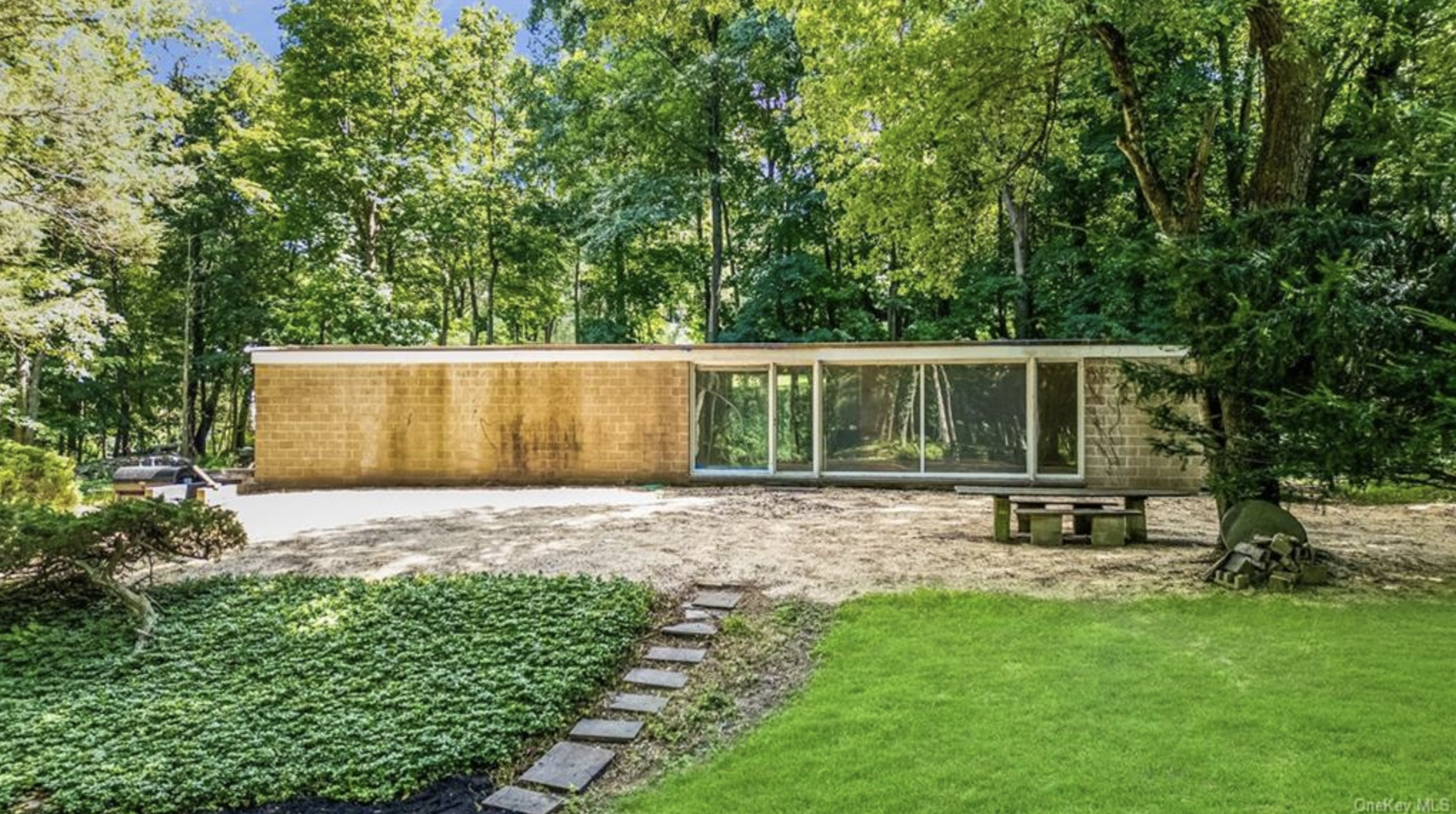
Pritzker Prize-winner Philip Johnson’s first residential commission is up for grabs. His Booth House, built during 1946 at 319 Pound Ridge Road in Bedford, New York, sold for $1.1 million in 2017. Now, the striking hilltop mid-century modern structure just hit the market, asking $1.9 million.
Design-focused agent Melissa Marcogliese, who’s handling the sale, told me over the phone that her clients, who appear to include art advisor Thomas Rom, purchased this property and two adjacent lots to build a new home. Those clients have since decided to go a different route, and want to pass the expanded 4.28-acre parcel along to an aficionado. The original Booth House comprises 1.6 acres, and spans two structures—the main house, and the guest studio behind it, added by its second owners.
Behind the Booth House. Courtesy of Compass.
Johnson completed his first-ever home at 9 Ash Street in Cambridge, Massachusetts in 1942 while he was still studying at Harvard’s Graduate School of Design. (Harvard has since removed Johnson’s name from the site.) A few years later, Manhattan-based Richard and Olga Booth commissioned Johnson to design their weekend home in Westchester. In 1955, they sold the house to Sirkka and Robert Damora, who were involved in the modernist architectural movement and already renting the residence. Sirkka listed the house in 2010, following Robert’s death. Despite its fame, the Booth House took seven years and one steep discount to sell.
Inside the Booth House. Courtesy of Compass.
“We knew it was Philip Johnson’s house but the name didn’t mean much at the time,” Sirkka recounted of their initial purchase in 2010.
By the time she and Robert scooped it, however, Johnson had already erected his now-iconic Glass House in New Canaan, Connecticut. The Booth House, its immediate predecessor, foreshadowed Johnson’s affinity for integrating residencies with their sylvan surroundings. The concrete and glass Booth House retains its original open floor plan and interiors, which need a complete restoration—including new windows and a new kitchen. But, Marcogliese noted that its verdant, private surroundings are still pristine.
Behind the fireplace. Courtesy of Compass.
“When you look out through the glass walls, you can go back in time and realize the genius of Philip Johnson, and why he plotted the home on the area of the piece of property that he did,” Marcogliese said. “The feeling you get is magnificent.”
The zip code is coveted, too. The Booth House sits five minutes down the street from the bygone semi-public Buckhorn Sculpture Park, which hit the market in 2022. Nearby Bedford Village has welcomed a new generation of creatives since 2020, thanks to its country-chic charm. Marcogliese considers the area a modern-day “Valley Of The Dolls,” since portions of the 1967 cult classic film were shot here.
Heading downstairs in the Booth House. Courtesy of Compass.
Unlike Johnson’s Glass House, the Booth House is not a protected historic site. Marcogliese hopes the buyer will acquire it with good intentions, and perhaps conduct an overhaul akin to the $1.8 million renovations Johnson’s Brick House just received. “I had someone who runs a foundation come to look at it,” she told Curbed. “I had someone call from Japan.”
Despite its baggage, the home still seeks a pretty price. “Simple is expensive,” Marcogliese told me. “Simplicity lasts forever.”